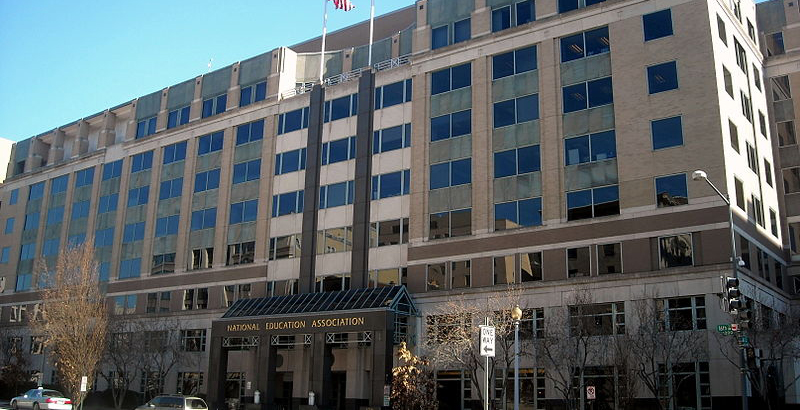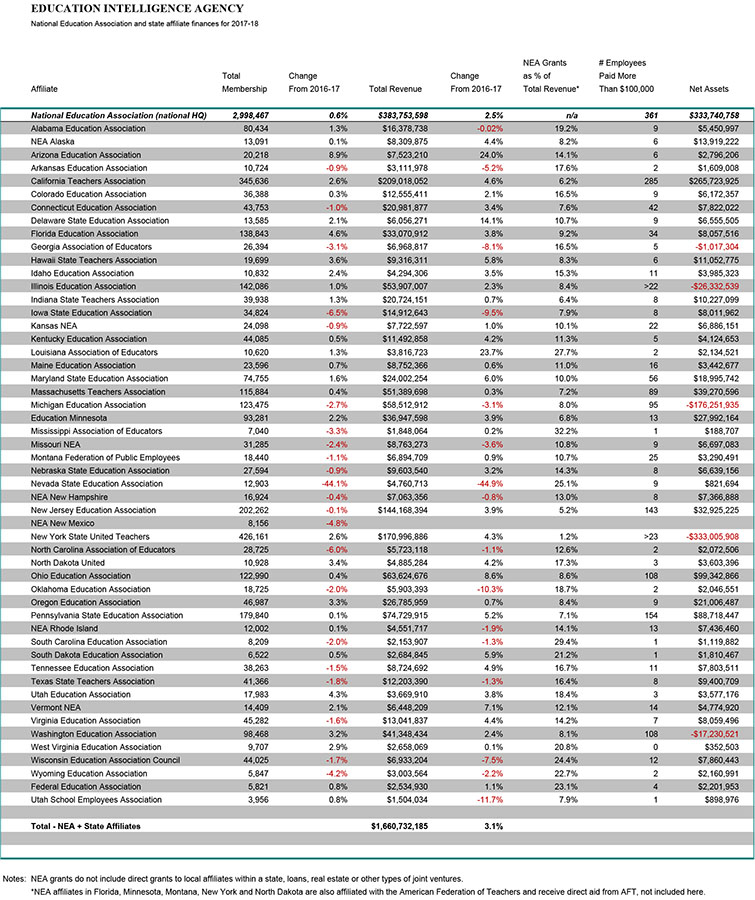Union Report: #GreenForEd? NEA and Its State Affiliates Took In $1.6 Billion in 2018, Federal Disclosures Show

Mike Antonucci’s Union Report appears most Wednesdays; see the full archive.
As #RedForEd strikes hit West Virginia, Oklahoma, Arizona and a handful of other states, 2018 was dubbed the year of teacher protests. It was also the year of the U.S. Supreme Court’s Janus ruling, which promised to have a profound effect on teacher union finances.
In between those events, the National Education Association and its state affiliates completed their annual financial disclosure reports for the Internal Revenue Service detailing their income and expenditures. These reports are public records, because all these unions are exempt from federal income taxes. The reports are filed well after each affiliate’s fiscal year is complete, leaving us to examine disclosures that are now 18 months old. Even so, one affiliate, NEA New Mexico, has apparently not filed yet.
I have compiled information from the filings of NEA and its state affiliates for the 2017-18 school year. Their revenues totaled more than $1.66 billion, an increase of 3.1 percent over the previous year.
NEAStateAffiliateFinances2017 18 (2) (Text)
NEA national headquarters alone took in almost $384 million. The union’s expenditures are divided roughly into thirds: one-third subsidizes staff costs and other projects in state affiliates; one-third goes toward the salaries and benefits of its 500-plus employees in Washington, D.C.; and one-third covers travel, building maintenance, computers, paper clips and all other costs associated with a large business.
Payroll costs are huge. NEA paid each of 361 employees more than $100,000 in taxable income. State affiliates in California, New Jersey, Ohio, Pennsylvania and Washington all had more than 100 employees earning more than $100K apiece. Illinois and New York are also likely on this list, though both affiliates failed to report that number to the IRS in 2018.
It is difficult to draw conclusions about the effects of the #RedForEd protests on union income. The Arizona Education Association certainly benefited: Its membership increased almost 9 percent and its revenues grew by 24 percent. On the other hand, the Oklahoma Education Association saw membership drop by 2 percent, and its revenues fell by more than 10 percent. The West Virginia Education Association’s membership grew, but revenues remained essentially unchanged. Kentucky was up, North Carolina down.
Nine state affiliates experienced revenue increases of 5 percent or more, while 16 affiliates took in less money than they had in the previous year. The biggest loser was the Nevada State Education Association, where the departure of its Las Vegas affiliate led to a revenue decrease of almost 45 percent.
The financial health of each affiliate can also be judged by its reliance on NEA subsidies. Nine state affiliates (and probably New Mexico) received more than 20 percent of their income from NEA national headquarters.
Finally, there is an accounting of each union’s net assets — the value of all its possessions minus the debts it owes. NEA and most of its affiliates have plenty of money in the bank and invested on Wall Street. Some could last for months, or even years, with all new revenues cut off.
However, a handful do not have enough assets to cover their debts. Georgia, Illinois, Michigan, New York and Washington are deep in the red, mostly because of pension and health care liabilities they owe their current and retired staffers. The Michigan Education Association’s attempts to cut those costs led to a lawsuit filed by its former employees.
Overall, NEA’s 2018 picture was rosy. We do know from its more recent disclosures to the U.S. Department of Labor that 2019 was not as kind. Unfortunately it will be many months before we know how things worked out for each individual state.
Get stories like these delivered straight to your inbox. Sign up for The 74 Newsletter

;)
